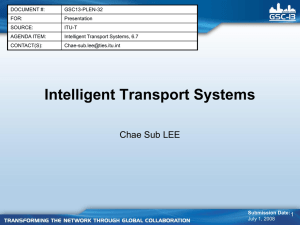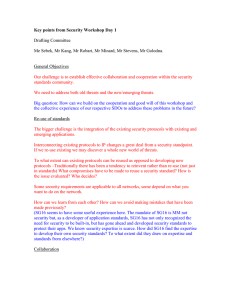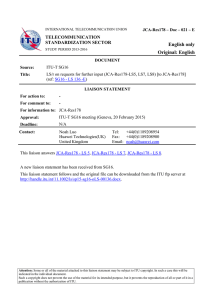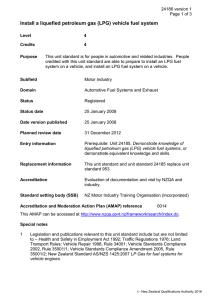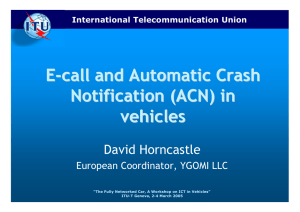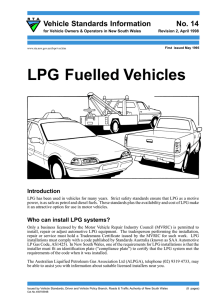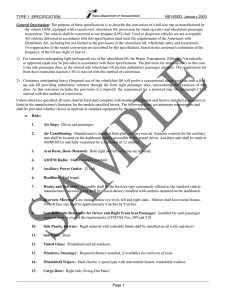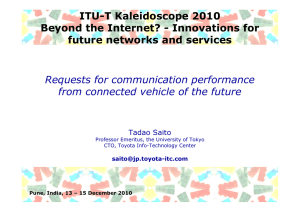Conclusions: Sessions 2 & 3 James Gover, IEEE VTS
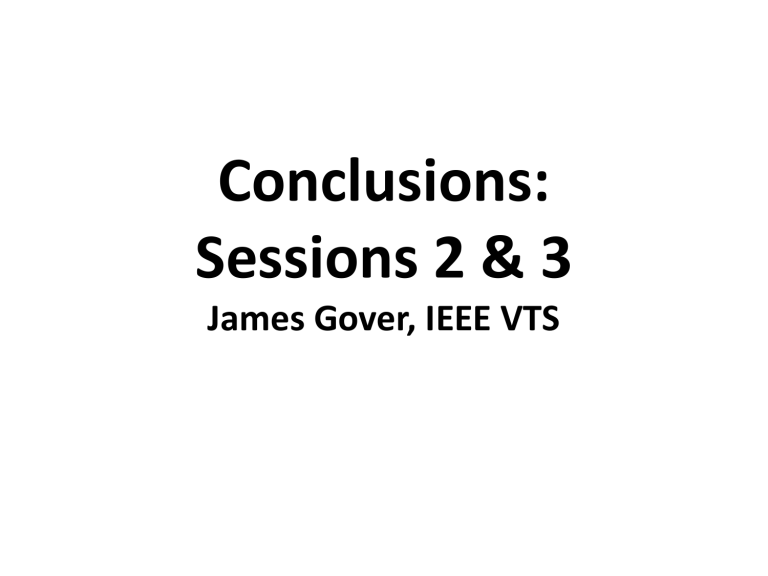
Conclusions:
Sessions 2 & 3
James Gover, IEEE VTS
1. Yunpeng Zang, Aachen University
• Car2Car
– Works Well with High Penetration Rates
– With Low Penetration Rate, Fragmented Network
• Cellular
– In Place Infrastructure Assures Timely Message
Dissemination over Large Area
• Hybrid Solution Combines Best of Car2Car and Cellular
2. Wai Chen
• Cars using Local Peer Group (LPG) V2V Communication
Architecture to distribute the warning message
— All vehicles can use electronic brake to stop in time.
— The demo showed the capability of the LPG approach to provide fast reliable multicast communications for safety applications.
3. Adam Brzozowski
• SISTER is 3 Years, 10.5M Integrated Project cofunded by DG Enterprise & Industry Started in 2006
• SISTER promotes the integration of satellite and terrestrial communications with GALILEO to enable mass-market take-up by road transport
applications.
4. Asier Alonso Munoz
1. Found an innovative SDR design methodology for on-board (and infrastructure) devices which enables multiple radio integration
2. Defined a reconfigurable system architecture which enables seamless evolution towards new communication standards
3. Designed a new signal processing algorithm which, making use of new acquisition techniques, allows reducing the number of Hw components
5. Arnaud de Meulemeester
o o o o
Dot-car (.car
) is an initiative that ATX recommended to CVTA (Connected Vehicle Trade Association).
Gives the vehicle access to the World Wide Web
Defines rules and guidelines for compliance to enable the internet access in the car
Enables new business models / customer offer / customer usage
6. Herbert Scheitler
• 3G Car Gateways for Advanced Driver Solutions supports the driver for the most efficient, safe, secure and comfortable journeys
• Cooperative systems and eSafty solutions will improve the performance of stand alone systems considerably and will reduce the number of fatalities significantly
• The interests of different stakeholders have to be aligned and critical business issues must be resolved in order to introduce the systems successfully in the market
• Permanent innovations are necessary to catch up with increasing demands
7. Jean-Marie Vonnin
o Current ITS market
Communications
— Different proprietary solutions/communication systems
—Open the market: reduce the cost and free the innovation o IPv6 is not an option for wide deployment
IPv4 will limit the development of an ecosystem
— Service and connectivity providers are tied together o ISO defines the CALM architecture
Use IETF open standards (IPv6, NEMO) o Multiple ITS stakeholders have to take part in the decision making routing decisions, interface management
8. Ranier Makowitz
o The FlexRayTM communication system has become the standard solution for automotive distributed control systems o The next generation will focus on cost effective
FlexRayTM systems
• Easy replacement of CAN: simple, linear bus structures
• Multi-tiered topologies: FlexRay-2-Flexray architectures o At the same time, innovation in Chassis Electronics can still continue to use the FlexRayTM system as a vehicle for Domain-based architecture redefinition
9. Yushi Naito
• ITU-T SG16 is working on Vehicle Gateway Platform and System coordination for improving speech quality in Car Communications.
• Evolving Car Communication technology can make driving environment safer, richer more comfortable and human friendly.
• To attain these ultimate targets, SDOs and Forums have to collaborate together to fill the gaps.
• ITU-T SG16, responsible for multimedia coding, systems and applications, is widely open for collaboration to attain these ultimate targets through
Car Communication standardization.




